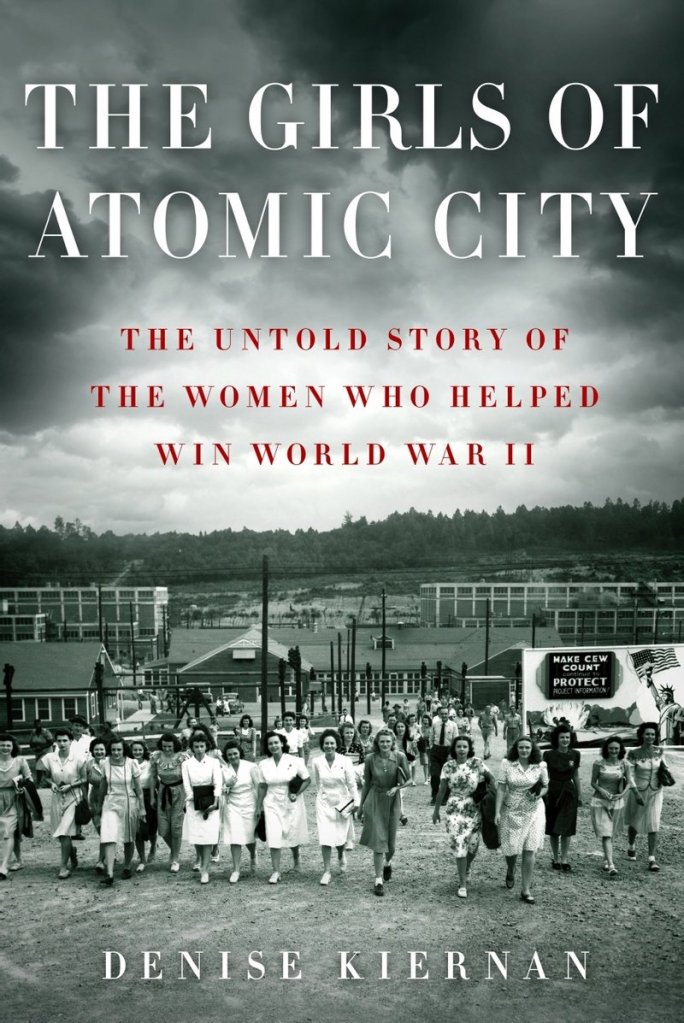Now in their 80s and 90s, the girls of Atomic City are no longer in the dark about the jobs they took during the summer of 1943. But back then, as young employees of the Clinton Engineering Works, they knew only a few things for sure about the place they would call home for the next two years.
• The work site, all 92 square miles of it, had belonged to 1,000 east Tennessee farming families up until 1942, when the government seized 60,000 acres of their land under eminent domain and built a massive industrial complex not found on any map.
• Security was paramount: “Appropriate clearances had to be earned, physicals passed, photographs and fingerprints taken, urine collected, and stacks of ‘I swear I won’t talk’ papers signed.” You didn’t tell a soul what you were doing there, or even discuss it with other workers.
• There was a sea of mud that ruined their shoes wherever they went.
None of them had the faintest idea they had signed on with the Manhattan Project and that their job was to collectively enrich the uranium — codename Tuballoy — that would be used in the atomic bomb.
In her meticulously researched and entertaining “The Girls of Atomic City,” Denise Kiernan explores this little known phase of the project’s history through the experiences of several young women who lived and worked in what would one day be known as Oak Ridge, Tenn.
Celia from Pennsylvania coal country, Kattie from Alabama, Rosemary from Chicago, and local girls Toni, Jane, Helen, Coleen and Dot would make up a force of secretaries, statisticians, nurses, chemists, technicians and janitors who were told their efforts would help win the war. No questions asked.
The project welcomed women to its ranks, especially the Appalachian “high school girls from rural backgrounds” who were “easy to instruct (and) did what they were told.” These obedient worker bees soon proved more valuable than anyone could have guessed.
The “hillbilly girls” worked more efficiently, “generating more enriched Tuballoy per run” than the scientific teams who “just couldn’t stop fiddling with things.”
Kiernan’s book, the result of seven years of research and interviews with surviving “girls,” sparkles with their bright, WWII slang and spirit, and takes readers behind the scenes into the hive-like encampments and cubicles where they spent their days and nights.
Squeezed into cramped quarters and dealing with wartime shortages, they still managed to wash out their lingerie, dance, send money home, bake biscuits, sneak out after curfew and husband-hunt within the tight-knit community.
Despite Orwellian levels of secrecy that included locked gates, lie detector tests and pressure to inform on each other, “women infused the job site with life, their presence effortlessly defying all attempts to control and plan and shape every aspect of day-to-day existence at Oak Ridge.” They made themselves at home, and they bonded.
“The military may have been in charge, but the irrepressible life force that is woman — that was well beyond their control.”
Hanging onto their jobs meant no questions asked about the knobs they turned, the calutrons they operated, or what was in the pipes they inspected.
By contrast, Kiernan provides readers with the hard science behind the mysterious three reactors at Oak Ridge. The era of “Rosie the Riveter” may have ushered in better opportunities for the women of Oak Ridge, but Kiernan’s subjects have not forgotten their encounters there with sexism, unequal housing and pay, and racism.
In the Jim Crow state of Tennessee, black workers found themselves not only segregated from whites, but housed in crude “hutments” and separated from their spouses.
Perhaps the most dangerous inequity of all was the failure to warn workers of their exposure to radiation. Not only was the government aware of the dangers, but it conducted experiments on 18 subjects, a haunting example of which Kiernan details at length in the story of a black car-wreck survivor given injections of plutonium without his knowledge.
“The Girls of Atomic City” brings to light a forgotten chapter in our history that combines a vivid, novelistic story with often troubling science. Though the patriotic women — and men — at Oak Ridge were glad to have helped win WWII, we’re left wondering how many would have refused the jobs had they known what the morning of Aug. 6, 1945, would bring.
On the day they learned just what it was they had spent two years of their lives producing, many residents of Oak Ridge cheered in celebration. Japan had surrendered.
Others were overwhelmed with mixed feelings. One young worker left the festivities early, retiring to her dorm room. “She sat there, thinking about the small role she had played in the bombing, and cried.”
Send questions/comments to the editors.



Success. Please wait for the page to reload. If the page does not reload within 5 seconds, please refresh the page.
Enter your email and password to access comments.
Hi, to comment on stories you must . This profile is in addition to your subscription and website login.
Already have a commenting profile? .
Invalid username/password.
Please check your email to confirm and complete your registration.
Only subscribers are eligible to post comments. Please subscribe or login first for digital access. Here’s why.
Use the form below to reset your password. When you've submitted your account email, we will send an email with a reset code.